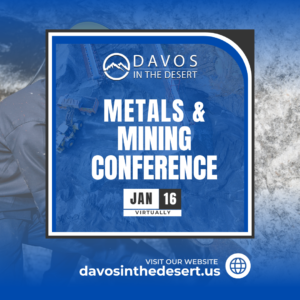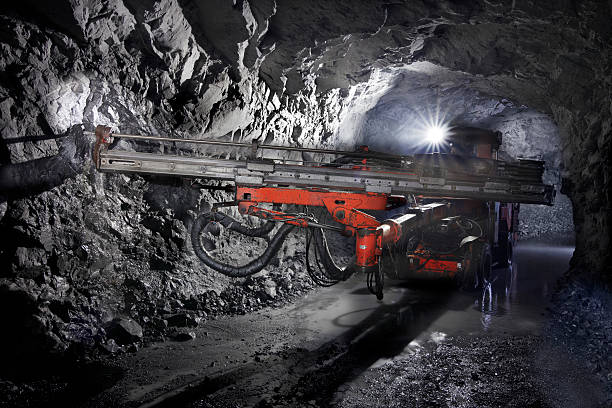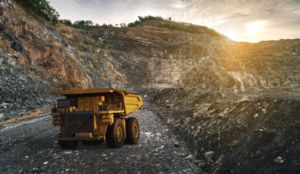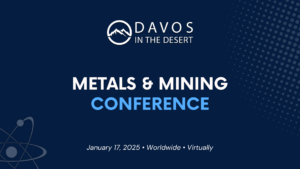Metals & Mining Conference
Worldwide – Virtually
January 16, 2025
 Join us for the Davos in the Desert’s 2025 Metals and Mining Conference, a premier virtual event bringing together industry leaders, investors, and professionals from around the globe. This conference offers a unique platform to explore the latest trends, technologies, and developments in the metals and mining industry. Whether you are an investor seeking investable ideas or a professional in the mining sector looking to stay ahead of technological advancements, this conference is for you.
Join us for the Davos in the Desert’s 2025 Metals and Mining Conference, a premier virtual event bringing together industry leaders, investors, and professionals from around the globe. This conference offers a unique platform to explore the latest trends, technologies, and developments in the metals and mining industry. Whether you are an investor seeking investable ideas or a professional in the mining sector looking to stay ahead of technological advancements, this conference is for you.
The following are among the primary end uses/sources of demand for gold:
- Jewelry: Gold’s luster, malleability, and resistance to tarnish make it a popular choice for rings, necklaces, bracelets, and other adornments.
- Investment: Gold serves as a store of value and a hedge against inflation. Investors buy gold bars, coins, and exchange-traded funds to diversify their portfolios.
- Currency and Reserves: Central banks hold gold reserves as part of their foreign exchange reserves.
- Electronics: Gold’s excellent conductivity and resistance to corrosion make it essential in electronics, including circuit boards, GPS systems, calculators, connectors, and switches.
- Dentistry: Gold alloys are used for dental crowns, bridges, and fillings due to their biocompatibility and durability.
- Aerospace: Gold-coated films protect astronauts, satellites, and spacecraft from extreme temperatures and radiation.
- Medicine: Gold nanoparticles are used in diagnostics, drug delivery, and imaging.
- Art and Decoration: Gold leaf is applied to paintings, sculptures, architectural fixtures, and trimmings.
- Catalysis: Gold nanoparticles act as catalysts in chemical reactions, including automotive emissions control.
- Lubricants: Gold nanoparticles improve lubricant performance in machinery.
- Global demand for gold averaged 4,448 metric tons in 2023, with U.S. consumption at 250 metric tons.
- Approximately 3,000 metric tons of gold were produced from mines worldwide in 2023.
- Global central banks held nearly 37,000 metric tons of gold, about 17% of all gold mined throughout history.
- Notable transactions: Newmont Corporation acquired Newcrest Mining for $16.8 billion, and Pan American Silver Corp. acquired Yamana Gold for $4.8 billion.

The following are some new technologies designed to render gold mining more productive:
- Advanced Machinery: High-capacity haul trucks and hydraulic shovels/excavators transport massive amounts of ore and move the earth swiftly and accurately.
- State-of-the-Art Drills: Modern drills bore into the earth, revealing hidden deposits more effectively.
- Complex Processing Plants: These plants refine ore efficiently, minimizing waste and environmental impact.
- Digital Transformation: The industry utilizes automation, data analytics, and remote monitoring.
- Mineral Exploration Techniques: Innovative technologies include:
- Airborne Gravity Gradiometry (AGG)
- Airborne Electromagnetics (EM)
- Induced Polarization (IP)
- Hyperspectral Mapping
- Superconducting Quantum Interference Device (SQUID)-based Time-Domain Electromagnetic (TDEM)
- 3D Electric and Electromagnetic Surveys
- Portable Mineralogical and Geochemical Analyzers
- Unmanned Aerial Vehicles (UAVs)
- Automatic Spectroscopic Scanning of Drill Cores
- Neural Networks/Deep Learning for data processing and interpretation.

The following are some interesting facts about the Gold Mining industry:
- Major gold producers include China, Russia, Australia, South Africa, the United States, and Peru.
- Gold’s chemical symbol is “Au,” derived from the Latin word “aurum,” and its atomic number is 79.
- Gold is incredibly malleable and ductile; a single ounce can be stretched into a wire about 50 miles (80 kilometers) long.
- Pure gold is yellow, but it can appear in shades of red and green when alloyed with other metals.
- Gold is dense; a cubic foot weighs over half a ton.
- Until the 20th century, many countries used the gold standard, where paper money was backed by physical gold reserves.
- Gold is found in asteroids and even in the Earth’s core; some estimates suggest that Earth’s core contains more gold than all the world’s mines combined.
- All the gold ever mined would fit into three Olympic-sized swimming pools.
Each management team will discuss their companies’ exploration and production strategies. They will inform us of their geological surveys, estimated reserves, costs of production and royalty obligations. They will shed light on the technologies they use to extract gold as well as availability of labor. They will tell us about collaborations and financing strategies.
Note: All times Pacific
8:50 am – Welcoming Remarks
Speaker: David Wanetick, CEO, Davos in the Desert
9:00 am – Developments in the Diamond Industry
Listeners will learn how diamonds are sourced, the geographies where demand is picking up, competition from lab grown diamonds, the impact of artificial intelligence and much more. The following are among the issues likely to be discussed:
- Which countries are the primary sources of natural diamonds?
- How much of an impact have sanctions on Russian diamonds had on worldwide diamond prices?
- Why is Botswana an important part of the diamond ecology? What is beneficiation?
- What are the 4Cs of appraising diamonds? Do diamonds lose their positive features over time?
- What role is artificial intelligence playing in standardizing the 4Cs and in demonstrating authenticity?
- Which countries are becoming bigger consumers of diamonds?
- How important is the bridal market in terms of demand for diamonds? How might second marriages and non-heterosexual marriages impact the bridal market?
- To what extent are there diamond trading platforms similar to stock markets? What are the challenges in so commoditizing diamonds?
- How much of an effort has the diamond industry taken to guard against child/slave labor?
- How prevalent are lab grown diamonds?
Speaker: Avi Krawitz, World-Renowned Diamond Consultant
10:00 am – Developments in the Gold Industry
Listeners will learn about retail and industrial demand drivers for gold as well as developments in gold production. Attendees will glean insights into new technologies being harnessed to boost productivity in gold mining. Listeners will get an update of central banks’ stance with respect to holding gold reserves. The following are among the other issues that may be addressed:
- What is happening with respect to labor in the gold mining industry?
- What are some trends in terms of sustainability in the gold mining industry?
- Is the gold mining sector becoming more or less energy intensive?
- Which governments are becoming more rigorous (or lax) with respect to permitting, royalty expectations and tax policies?
- How is consolidation impacting the gold mining industry?
- To what extent are geological surveys and estimations of reserves becoming more accurate?
- How do costs of production vary from one region to another?
Speaker: Adrian Hammond, Senior Analyst, SGB Securities
11:00 am – DarkPulse Inc.
Based in New York, DarkPulse develops, markets, and distributes a suite of engineering, installation, and security management solutions to industries and governments on an international level. DarkPulse’s ultra-high sensitivity infrastructure monitoring provides enhanced visibility to enterprises, allowing early detection of corrosion and system weaknesses before catastrophic failure. Our system outperforms all other distributed fiber sensors in the market. The company delivers security and monitoring systems in applications for border security, pipelines, the oil and gas industry, and mine safety. DarkPulse continues to expand its services, and their suite of solutions to address global critical resource and infrastructure challenges.
Speaker: Dennis O’Leary, Chairman & CEO, DarkPulse Inc.
11:30 am – Renforth Resources
Renforth Resources holds a significant battery metals property in Quebec, along with a nearby gold deposit. The property, which contains nickel/cobalt/Platinum and palladium combined with zinc/copper/silver and gold, enjoys road access, a nearby rail line, hydro-electric power lines on the property and social acceptability from the nearby mining communities and the first nation. Renforth has proven that the mineralized structure at surface can be pre-concentrated, improving future project economics, and is in the process of the first NI 43-101 Mineral Resource calculation. Nearby our gold deposit continues to grow, a resource update is scheduled for 2025 as we move this project towards bulk sampling of surface gold to create cash flow.
Speaker: Nicole Brewster, President & CEO, Renforth Resources
Please check back for updates to the agenda. If you would like to nominate a company to present, please contact David Wanetick at dwanetick@davosinthedesert.us.
Register now to listen to presentations from industry leaders and innovators. Free registration for members of Davos in the Desert; non-members can register now for just $10.
Don’t miss this opportunity to gain valuable knowledge about some hidden treasures in the metals and mining industry.

